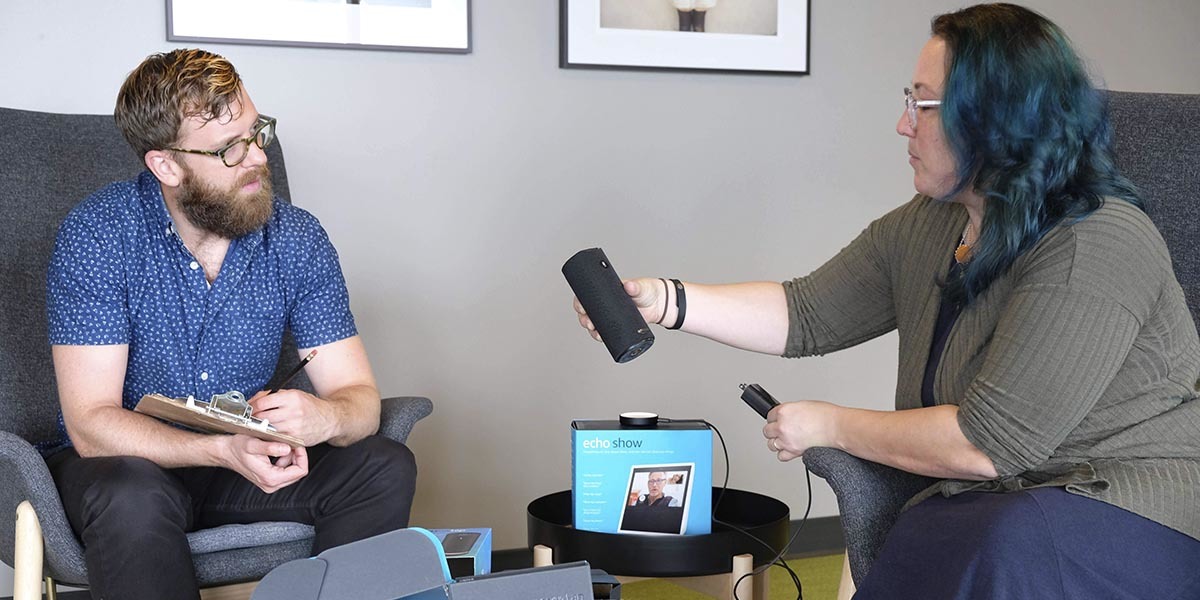
By Blink Staff
Read our white paper “When and Why To Start a Hardware User Research Program” to learn how hardware user research can help you create an inclusive, commercially successful product that people use, love, and remember.
In an era where 88% of consumers look to online reviews before purchasing a product, a fumbled release can tarnish brand reputation and hinder the adoption of new experiences. One way to avoid these mistakes is to engage in hardware user research throughout the product development lifecycle.
This white paper answers the big questions about hardware user research programs, including:
What is hardware user research?
After spending months or even years developing a new product, the last thing you want to hear is that it fell short of user expectations. Early adopters usually forgive when it comes to initial releases, but to break into the mainstream market, you’ll need to nail your hardware design from the start.

Testing hardware with users as early and often as possible is crucial for gaining invaluable insights about bridging the gap between your hardware design and target audience.
The best part? You can start conducting user research before you have a solid prototype. Early studies such as user and stakeholder interviews can help you understand user expectations and eliminate potential obstacles before getting too deep into your project.
What does the research process involve?
Our approach to hardware user research follows these five steps:
- Foundational research
- Concept testing
- Feature definition
- Usability studies
- Beta or pilot testing
Each stage in the process is critical for ensuring quality research. The data you gather in every phase of UX research allows you to continually improve your design and exceed consumer expectations.
What makes foundational research so important?
The answer is simple — foundational research informs excellent design. Many product development teams skip foundational research, which often leads to products that fall short of consumer expectations.
Foundational research helps your team:
- Understand your target audience.
- Identify the problem your product will solve.
- Determine whether demand exists for your proposed design.
- Gauge how well your solution matches users’ mental models and workflows.
This information allows you to understand and explore the possibilities within your space. It can also reveal whether a market exists for your proposed design and how you can reach prospective clients — crucial information for any product launch.
Why should you conduct hardware usability testing?
Sometimes, a product has a great concept and design but misses the mark in its execution. That’s what makes hardware usability testing so helpful.
It's advantageous to ensure your product is easy and intuitive for everyone in your audience to use. That’s why we prioritize inclusivity and accessibility in usability testing — we tailor our participant screeners to each user’s project to ensure a diverse pool of participants.
Taking an inclusive approach to user research studies enables your team to:
- Understand product use cases and discover new ones.
- Uncover design issues and find potential improvements.
- Enhance the out-of-box experience.
- Anticipate and resolve usability and accessibility challenges.
- Appeal to your intended audience and achieve mainstream market success.
- Gauge how well your product matches users’ expectations, mental models, and workflows.
- Optimize the user experience for all your users, not just the early adopters.
When you conduct UX research early, you give your team enough time to implement the feedback gathered from your studies, leading to higher user approval after you launch.

Learn how to optimize UX research with Blink
Download the white paper for all the details, including real user testing case studies and helpful tips.
We want to help you create beautiful, memorable designs driven by evidence. Contact us online to learn more about our UX services. You can also check out our blog for more useful resources.



